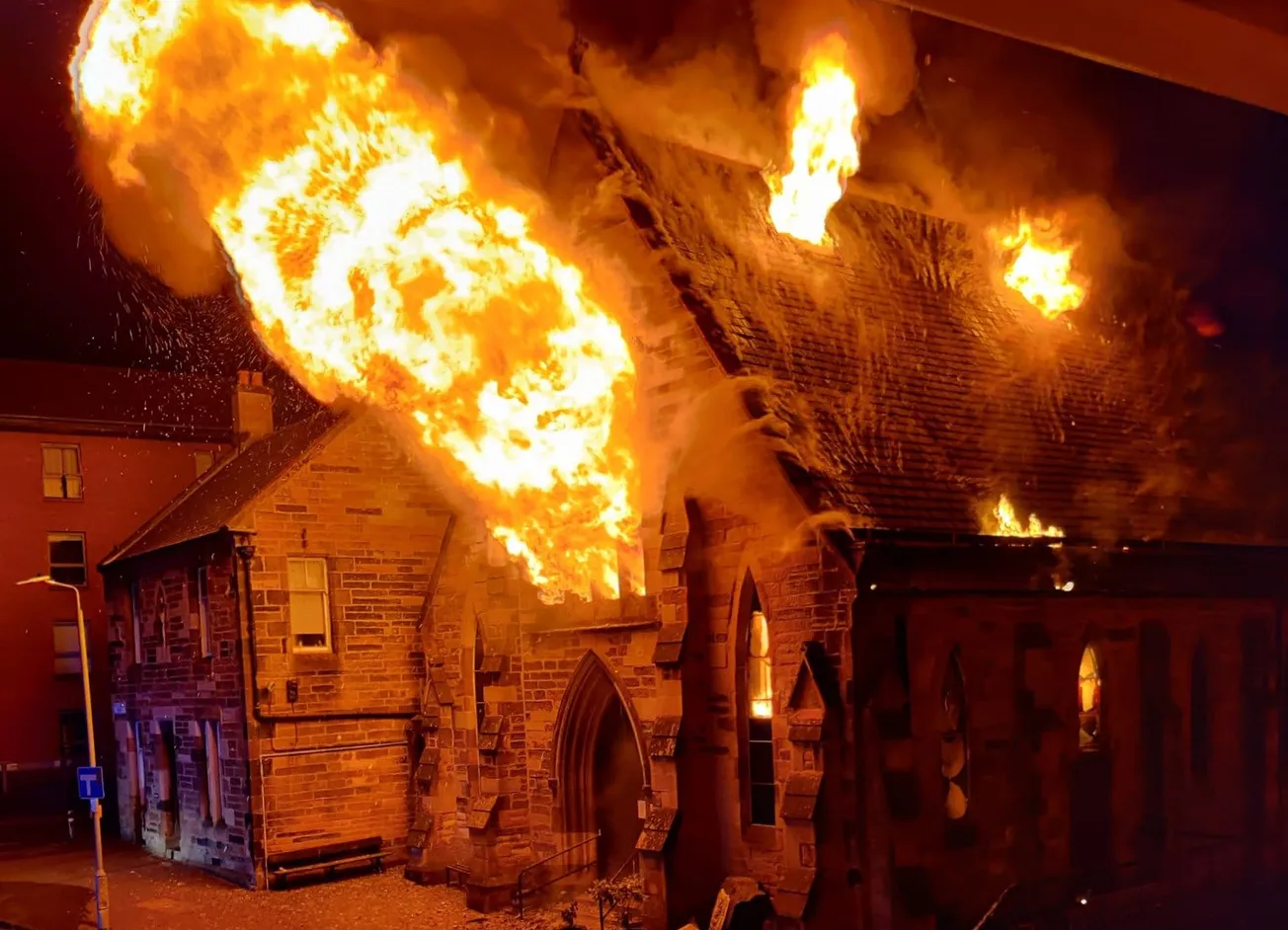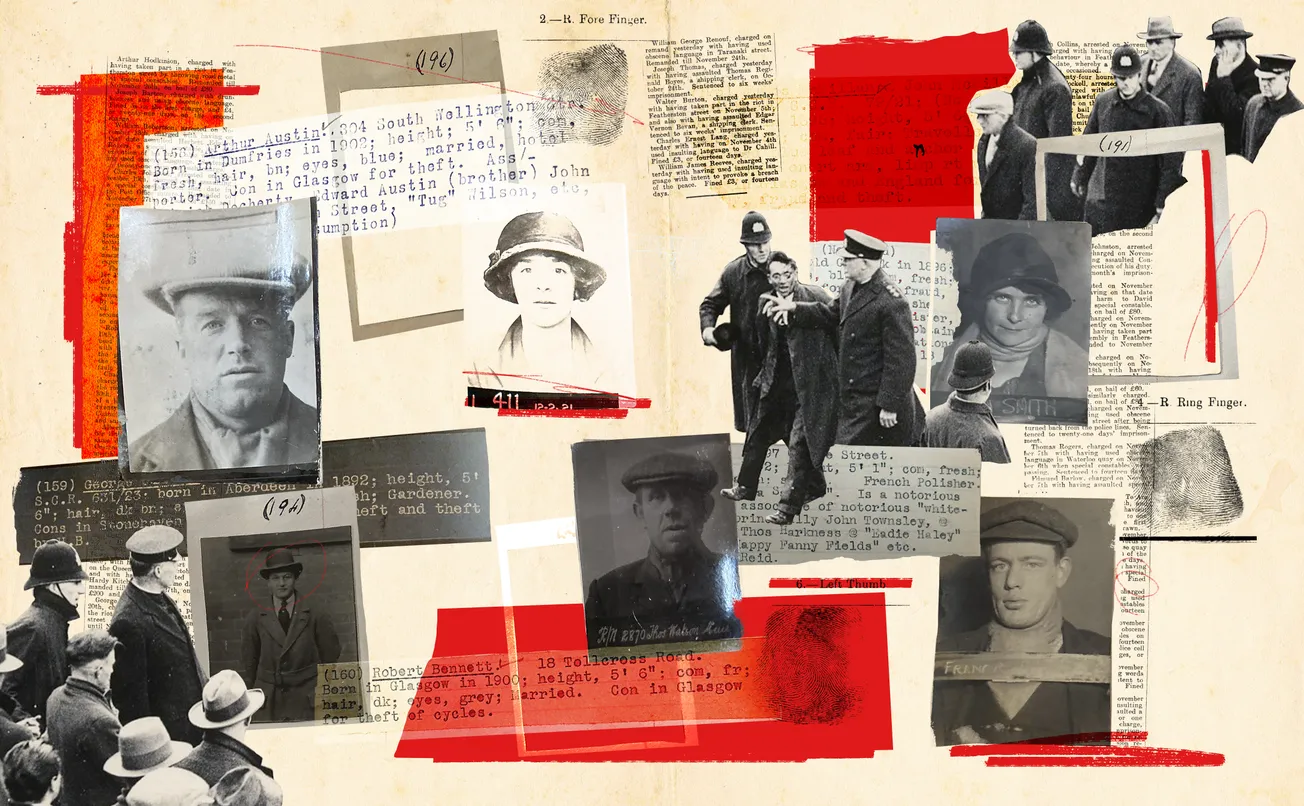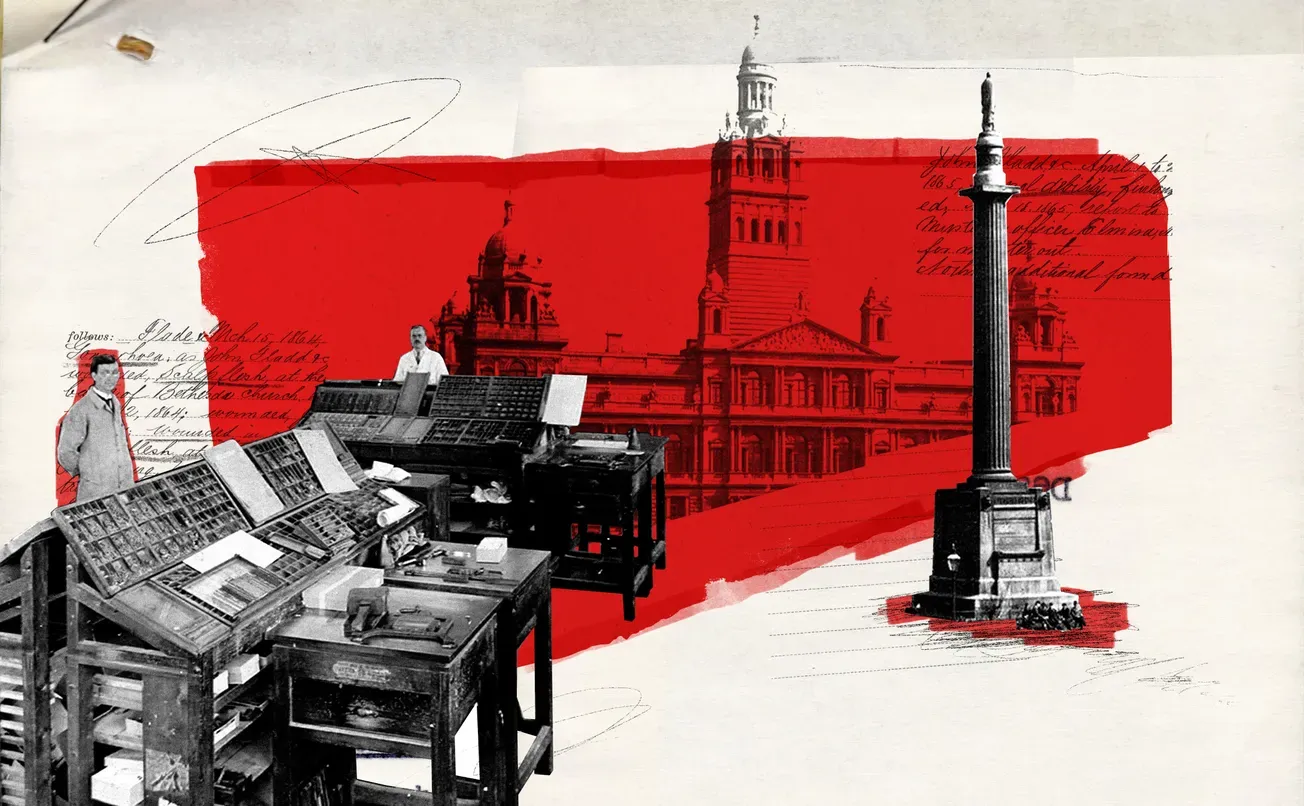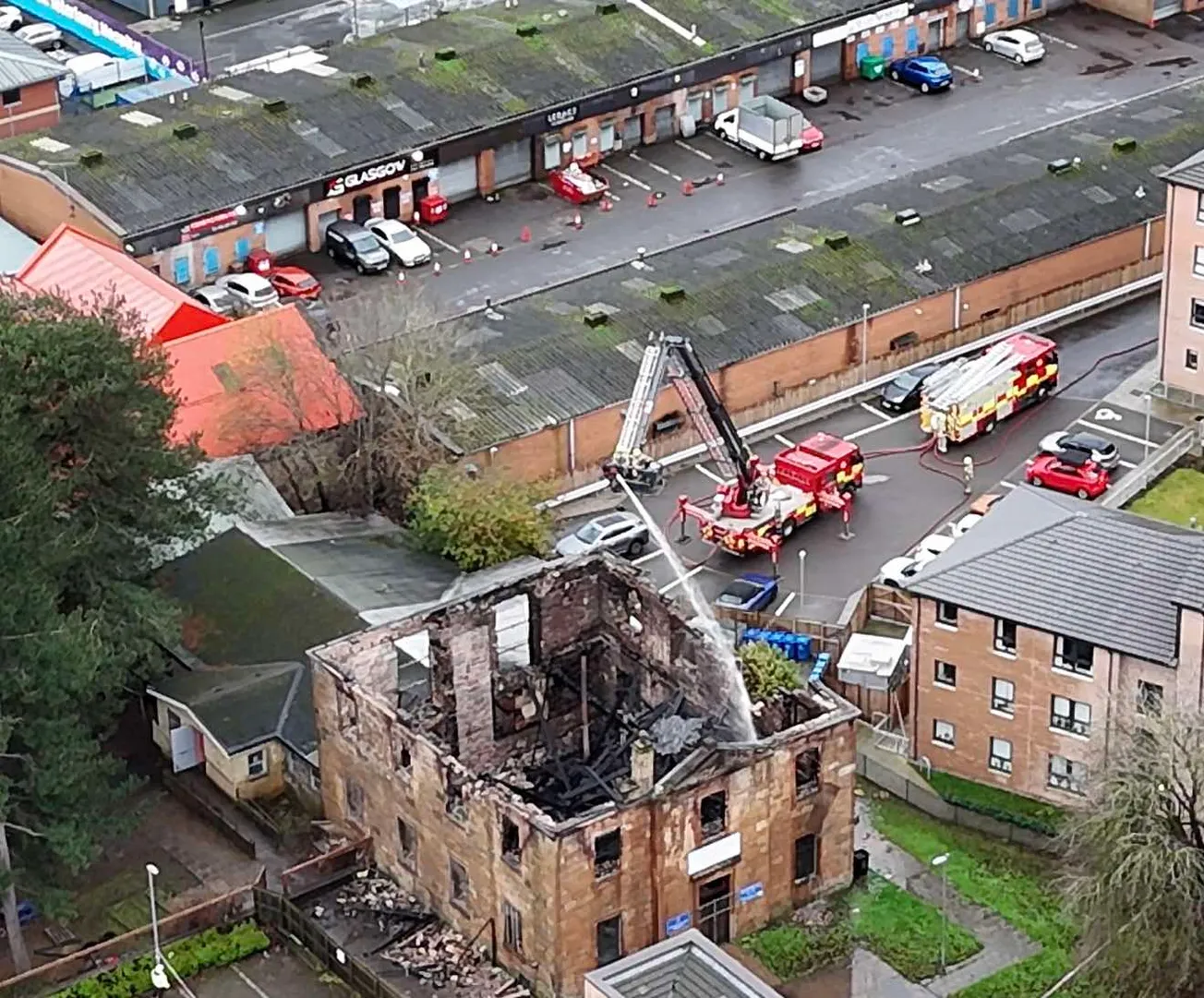You’ve heard the line about Glasgow’s heritage buildings. That, though they may have a proud history, their future is bound to be an inglorious one. They’ll catch fire in suspicious circumstances, then be demolished, or turned into student flats, or both.
The Glasgow Fire Theory, as I call it, is so ubiquitous that Reddit has a special flair (a tag attached to a post so people know what it’s about) called “Glasgow’s burning. Insert student flat joke.”
But of course, it’s no joke. I’ve been looking through news coverage of the second fire at Glasgow School of Art’s Mackintosh building which, in 2018, gutted one of Glasgow’s most beloved structures and one of Charles Rennie Mackintosh’s most important legacies. At the time, The Mack was undergoing an extensive renovation following an earlier fire in 2014, caused by the unfortunate combination of expanding foam and the hot part of a projector.
In the coverage you can see tears and hands covering mouths as faces glowed orange from the blaze. “Heartbreaking”, “just sad” and “mortifying” were words used by locals. The Mack was badly burnt, and remains so now, barely visible under bandages of scaffolding. If you ask people what makes them most angry about Glasgow, this is what they’ll often point to – with seemingly no accountability as another beautiful building goes up in smoke.
With every conflagration there are whispers that there’s slightly more to things than meets the eye. Could owners, wanting to escape the costly regulations of looking after a listed building, be behind it this time? Here at The Bell, it’s one of the things people most often ask us to look into.
Of course, to prove foul play is extremely difficult. Fires are, by their nature, destructive, often leaving little evidence behind. But I wanted to start by exploring whether the premise – that Glasgow is unusually flammable – is actually correct. Are fires a suspiciously common occurrence? To answer that, I realised I was going to need a map. After all, a map helped John Snow work out what was causing cholera in 185os London. Could it help solve what's happening with heritage buildings in 21st century Glasgow?
I've been chipping away at this ever since joining The Bell. The idea is for it to be the definitive record of important public buildings that have gone up in flames in this city. I’ve so far found 36 by looking at the last 25 years alone.
The map is below, have a root around the city and hover over the points to see who owned the property when the fire happened. Then let me know – are there any I’ve missed? Please share it far and wide – the idea is to build a comprehensive picture so the more input we can get from right across the city the better.
So, what patterns start to emerge when we trawl through the data?
You'll need to be a paid member of The Bell to keep reading. But what better time? We've got a summer offer on, allowing you to get your first three months for less than a pound a week. Just click below.
Firstly, you’ll note there are particular hotspots around Sauchiehall Street, the West End, and Tradeston. Of course, three of the points on Sauchiehall street are from the 2014 GSA fire and the 2018 one which spread to the 02 ABC, leading to its present demolition.
The West End, however, is more striking. Within a kilometre of Kelvingrove Park, fires have ripped through nine listed buildings since 2000, including the A-listed former Maclay Halls on Park Terrace, which was derelict and in the middle of a big refurbishment when it ignited in 2006. Another West End fire that occurred in the middle of an expensive renovation project is the former Belmont and Lilybank Church on Great George Street. In 2019, RH Contracts was busy converting the B-listed church into luxury apartments when a “deliberate” fire occurred, according to Police Scotland.
Right next to Lilybank Church (now called Belmont West apartments) lies a pristine example of an 1880s Glasgow terrace which comprises several privately-owned flats. This property, 1-4 Lilybank Terrace, was part of Hutcheson’s Grammar School before it was sold in 2007 for £4million to a company called Lilybank Terrace Limited. In October 2008, a planning application to convert the former school to multiple dwellings was accepted. It contained 16 requirements to safeguard the character of the B-listed building.
But less than a month later, a fire tore through the terrace, burning through the roof and leaving the future of the property in doubt. Another six months after that, Lilybank Terrace Limited submitted a new planning application for much the same purpose, which was granted with five fewer conditions for protecting key characteristics of the building. I’m not saying this was an inside job, and the fire service didn’t find that the fire was deliberate. But it’s another example of a West End listed building that has gone up in flames in mysterious circumstances.
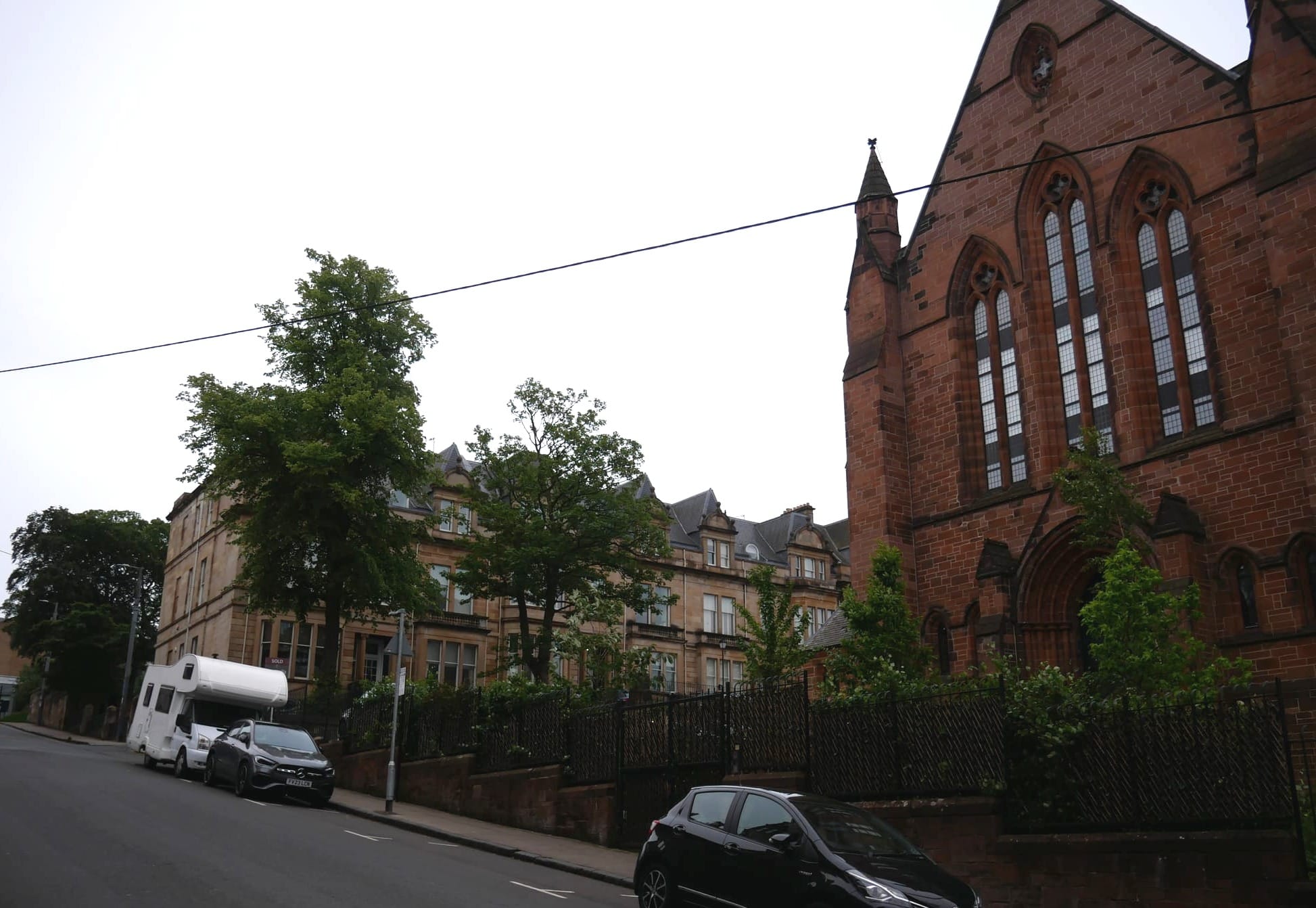
What about the other side to the theory — that these buildings are often converted into student flats?
Our data shows that, of the 36 fires in listed or significant buildings, just three involved the demolition of the original structure and subsequent erection of student flats. Two were, nonetheless, high-profile cases. The first was the fire in the old Elgin Place Congregational Church on Bath Street. The building opened in 1852 and was designed by John Burnet in the Greek Revival style. Sadly, the building, which had been a nightclub at the time of the fire in 2004, was demolished, and over a decade later it became the swanky student accommodation it is now.
The other example is Scotway House in Glasgow Harbour just behind Partick. It was originally the office for the Meadowside Shipyard, where Anchor Line ships and racing yachts were built from its founding in 1885. It fell out of use and became derelict over the years following the yard’s closure in 1935. It lay empty, crumbling, for decades. In 2002 a planning application was submitted and later withdrawn by Glasgow Harbour for the demolition of the B-listed building.
It sat around for a while longer. But then, in 2015, Glasgow Harbour submitted a new plan to the council to erect student housing which would “include conversion and incorporation of [a] listed building”. Dozens of plans and surveys went through the planning process until, in May 2016, fire took hold of the property and ravaged the interior — perhaps surprising in a derelict building with no electricity. Just three weeks later, planning permission for the development was granted. Scotway House was ultimately demolished, rebuilt at the command of the council (incurring high extra costs on the developer), and now forms part of a large student village right on the Clyde.
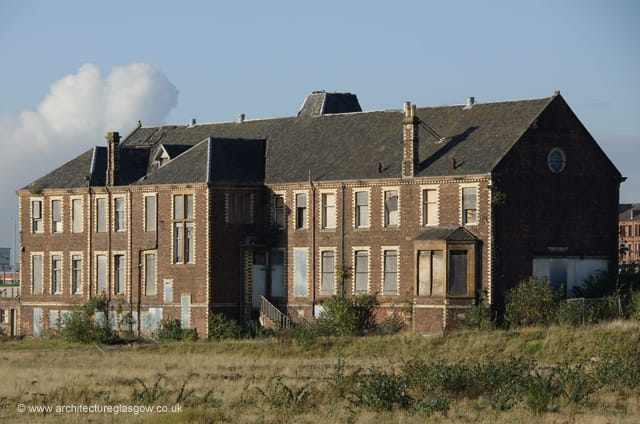
To the eagle eyed heritage watchers online, this wasn’t only predictable, it was actually predicted. On a website named skyscrapercity, there’s a specific discussion called The ‘not in any way suspicious’ buildings gutted by fire thread which has been discussing Glasgow’s fires since 2008. In 2015, a poster photographed the outside of Scotway House, noted a window that was “conveniently” left wide open, and, with eerie accuracy, implied that it was only a matter of time until it burned down.
Predictable these fires may be, but whether or not they are a deliberate ploy by the owners to rid themselves of a pesky barrier to development is an altogether different line of inquiry. Sometimes fires do just happen. According to the independent fire safety consultant Stephen Mackenzie, who was an expert for a Scottish Parliament hearing about the second fire at The Mack, derelict buildings are magnets for “squatters, substance users, and kids” breaking in and being “careless” with fire. In some cases, homeless people may shelter and light a fire to keep warm, adolescents may be out messing around, and sometimes vulnerable families look for a dry place to cook their tea over an open flame, something that Mackenzie tells me he’s witnessed first hand.
But, if this is the case, why aren’t the buildings better protected? Mackenzie responds that there are “no incentives for developers to protect these buildings.” Unpacking that, he tells me that developers are often buying a property for the land, not the building, and that if the building is listed, it can stand in the way of the plot producing value for the owner. Compounding this, materials, labour, and the first sale of new builds are exempt from the usual 20% VAT, whereas renovated older buildings usually are not.
“It’s the wrong way around”, according to Mackenzie. For him, an admitted traditionalist when it comes to architecture, tax breaks should apply first to restoration and renovation projects in historic buildings before being offered to new builds. Mackenzie also wants caveats on planning permission and buildings insurance, so they are withheld from developments which the owners have failed to protect.
“If the Scottish Parliament and city conveners are brave enough, there are a number of levers they can pull to incentivise conservation,” Mackenzie says. He believes that, in many cases, developers simply don’t have the right advisers, and that there are cost effective ways to restore these buildings. But, over his decades of experience in the industry, Mackenzie says he has seen some developers buy plots, and get them surveyed as a pretext to schedule an emergency demolition. And if the survey suggests it doesn’t warrant demolition, they will sometimes, he says, mysteriously “go on fire”. Mackenzie, it seems, is also sometimes persuaded by the Glasgow Fires Theory.
There’s a lot more to explore here — this is just the start of digging into one of the city’s biggest questions. If you have more information, please get in touch with me, and do let me know what we can add to the map. And, as ever, join in the discussion in the comments.
Comments
How to comment:
If you are already a member,
click here to sign in
and leave a comment.
If you aren't a member,
sign up here
to be able to leave a comment.
To add your photo, click here to create a profile on Gravatar.

